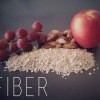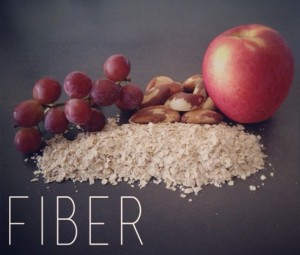 When you read the word fiber what do you think of? Now, a little song might have popped into your head, “Bean’s bean their magical fruit the more you eat, the more you toot!”… okay well if it wasn’t there already it is now! (Your welcome!)
When you read the word fiber what do you think of? Now, a little song might have popped into your head, “Bean’s bean their magical fruit the more you eat, the more you toot!”… okay well if it wasn’t there already it is now! (Your welcome!)
There are hundreds of articles on fiber and its benefits. To save you time, I read QUITE a few and have complied a little cheat sheet of what it is and why you should care!
To begin with, let’s address the first question!
“Why the heck should I care about fiber? ”
Well, first off it keeps you regular! Those of us that are part of the food intolerance or delicate stomach club are all too familiar digestion issues and regularly consuming fiber will help. It helps to soften and bulk up your stool as well as promoting the elimination of waste through your digestion system. Studies have also shown that keeping up a regular suggested intake of fiber can help lower blood cholesterol levels and control blood sugar levels.
Another useful benefit of fiber is that it helps fill you up. If you love to eat salads and lighter meals, or you often feel hungry shortly after you eat one thing that might help with that is making sure you get enough fiber so you can feel full. Fiber takes longer to digest, which makes your body work for a longer period of time to digest and use the nutrition which helps to keep you satisfied longer.
One word of caution before we dig in, make sure to slowly introduce and increase your fiber intake as well as drinking PLENTY of water. Adding too much fiber to your diet can lend itself to some… let’s call them uncomfortable side effects. (Bloating, diarrhea or constipation)
“What is Fiber?”
There are two types of Fiber that should be included in your diet.
1. Soluble fiber which dissolves in water, digests into the body and helps you feel full. This soluble fiber breaks down and forms into a gel-like substance during digestion. You can find it in foods like oatmeal, oat bran, beans, peas, flaxseeds and fruits.
2. Insoluble fiber which retails it’s bulk and helps things get moving by promoting movement through digestive system. This type is typically found in whole wheat and grains, wheat bran, brown rice, dark leafy and root vegetables, cabbage, tomatoes, raisins, grapes, etc.
“How do I get Fiber?”
At the end of this article, I include a graph that the Mayo Clinic published which illustrates serving size and the equavalent grams of fiber per serving for some popular high-fiber foods but I wanted to break it down and give you a genera “cheat-sheet” of some easy to incorporate high-fiber foods.
Beans
Whole Grains & Brown Rice
Popcorn & Nuts
Fruits like: Apples, Raspberries, Pears
Bran (oat, wheat, cereal, muffins)
Oatmeal
Veggies like: artichoke, peas,
Veggies (1 artichoke has 10 grams!1 c of peas is 8 grams)
“How much do I need?”
Now that you have an idea for what fiber is and where to find it let’s move on to the meat and potatoes (ha…cooking blog…meat and potatoes…get it?). How much do you need? According to a WebMD article I read, “the average adult only eats 15 grams of dietary fiber per day.” Wow! That’s half of what The National Academy of Sciences’ Institute of Medicine recommends for fiber intake. They suggest that women need 25 grams per day and men should get 38 grams per day (for those under 50).
“Now, what do I do?”
So, now that you know what it is, where to find it, how much you need and realize that you’re likely not getting enough let’s put the frosting on the cake (wow ladies and gentlemen I’m on a cinnamonroll today! Okay okay… I’ll stop) how to add more to your diet. Now that you now what contains fiber and have an idea of what to look for you can make choices to include more in your diet throughout the day. But remember, drink water with and fiber increase. American’s dont get enough water daily either! Men should drink 13 eight ounce cups of liquid a day and women need about 9 cups per day. I usually shoot for two Nalgene bottles of liquid (not including coffee/wine) per day. But back to fiber! One simple way to include more fiber throughout the day is to eat more beans with your meals and munch on fruit, nuts and popcorn for snacks.
Another easy way to add fiber is to start the day off right and find a bran cereal that you like. Bran is the outside part of a grain kernel. I’m sure you’ve seen the various bran cereals lining the shelves of the grocery store and might even have a mental picture of watching your grandparents mix up a chalky, lumpy glass of Metamucil. Oh wait, is that just my mental image? You might have to try a few cereals before you find the right one. I’m convinced that some of the “flavors” on the boxes of bran cereal should just read “cardboard”.
My favorite way to get some fiber is with bran muffins. I LOVE a good bran muffin. Not only when I’m … ahem… in neeeeeeeed of one but on a rainy morning, sunny afternoon, midnight snack. Anytime of the day is muffin time if you ask me! I’ve LONG been on the hunt for the ULTIMATE bran muffin. I’ve tried countless recipes including vegan, dairy-free and with dairy and just haven’t found the right mix of sweet enough, moist enough, anti-cardboard tasting.
I’ve seen both wheat and oat bran used in recipes. Wheat bran is lower in calories and fat and has much higher fiber content than the oat bran. It contains B vitamins such as Niacin and B6 and contains insoluble fibers to bulk up while oat bran is denser and contains vitamins such as folate and thiamine as well as soluble fibers which gel-up and absorb. It’s also a great option to consume on its own as a warm breakfast cereal. Eating wheat bran as a cold breakfast cereal by itself would be like gnawing on a bowl of shredded soggy cardboard.
So, while I’m still on the hunt for the PERFECT bran muffin recipe (if you have one you like PLEASE send it my way! I’m happy to guest feature you!) here are a few recipes that look delicious!
Here are a few recipes from my Pinterest Muffin board that I’m dying to try:
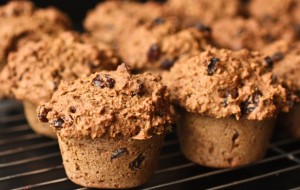
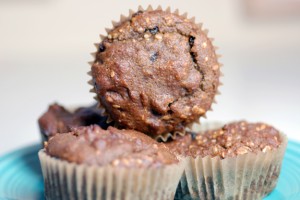

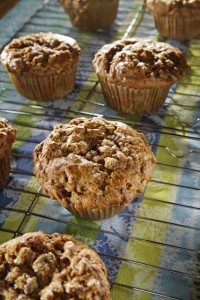
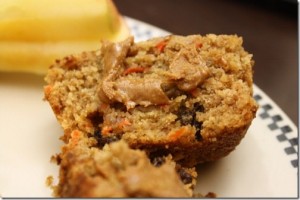
Graph illustrating fiber content found on the Mayo Clinic website here.
| Fruits | Serving size | Total fiber (grams)* |
|---|---|---|
| Raspberries | 1 cup | 8.0 |
| Pear, with skin | 1 medium | 5.5 |
| Apple, with skin | 1 medium | 4.4 |
| Strawberries (halves) | 1 1/4 cup | 3.8 |
| Banana | 1 medium | 3.1 |
| Orange | 1 medium | 3.1 |
| Figs, dried | 2 medium | 1.6 |
| Raisins | 2 tablespoons | 1.0 |
| Grains, cereal & pasta | Serving size | Total fiber (grams)* |
|---|---|---|
| Spaghetti, whole-wheat, cooked | 1 cup | 6.2 |
| Barley, pearled, cooked | 1 cup | 6.0 |
| Bran flakes | 3/4 cup | 5.3 |
| Oat bran muffin | 1 medium | 5.2 |
| Oatmeal, quick, regular or instant, cooked | 1 cup | 4.0 |
| Popcorn, air-popped | 3 cups | 3.5 |
| Brown rice, cooked | 1 cup | 3.5 |
| Bread, rye | 1 slice | 1.9 |
| Bread, whole-wheat or multigrain | 1 slice | 1.9 |
| Legumes, nuts & seeds | Serving size | Total fiber (grams)* |
|---|---|---|
| Split peas, cooked | 1 cup | 16.3 |
| Lentils, cooked | 1 cup | 15.6 |
| Black beans, cooked | 1 cup | 15.0 |
| Lima beans, cooked | 1 cup | 13.2 |
| Baked beans, vegetarian, canned, cooked | 1 cup | 10.4 |
| Sunflower seed kernels | 1/4 cup | 3.9 |
| Almonds | 1 ounce (23 nuts) | 3.5 |
| Pistachio nuts | 1 ounce (49 nuts) | 2.9 |
| Pecans | 1 ounce (19 halves) | 2.7 |
| Vegetables | Serving size | Total fiber (grams)* |
|---|---|---|
| Artichoke, cooked | 1 medium | 10.3 |
| Peas, cooked | 1 cup | 8.8 |
| Broccoli, boiled | 1 cup | 5.1 |
| Turnip greens, boiled | 1 cup | 5.0 |
| Sweet corn, cooked | 1 cup | 4.2 |
| Brussels sprouts, cooked | 1 cup | 4.1 |
| Potato, with skin, baked | 1 medium | 2.9 |
| Tomato paste | 1/4 cup | 2.7 |
| Carrot, raw | 1 medium | 1.7 |
